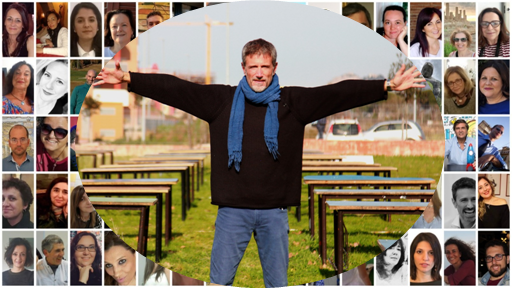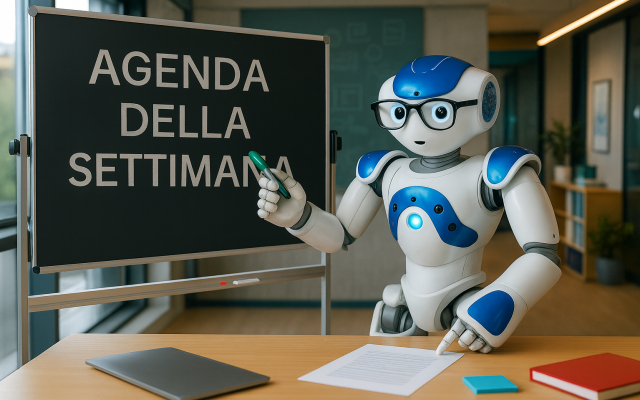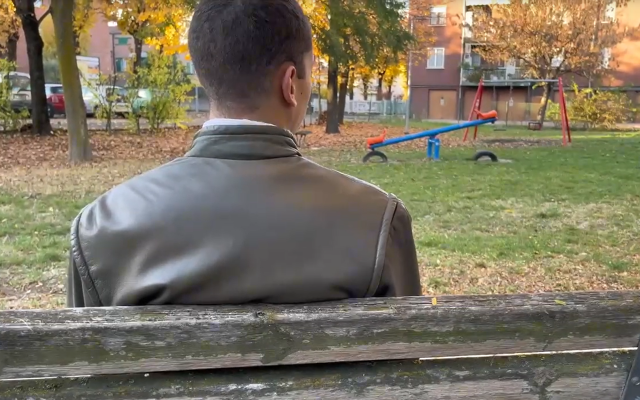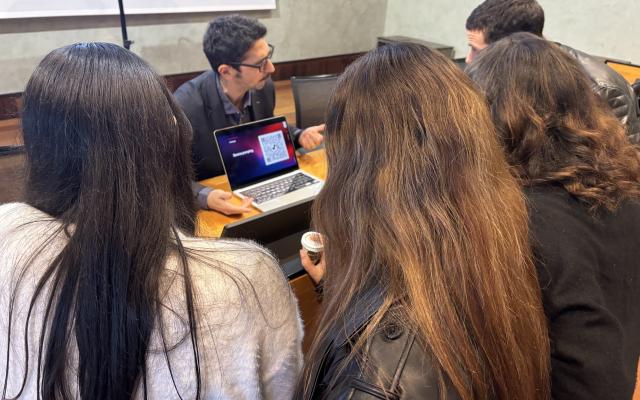This is our eighth weekly instalment of interviews with teachers in Project “Our School” who we have described as i-Teachers, inclusion teachers, who work day in and day out to make sure that no one is left behind [see news: Our School].
Today, a short video and an interview by Ilaria Gaudiello will introduce us to Roberto Ianigro, Professor of Drawing and Art History, who is seeking new and original solutions to make learning a more profound experience.
 Roberto Ianigro was born in Campobasso in 1969. He is a professor, architect and research doctor, he has been teaching drawing and art history in second-degree secondary school for over twenty years. For the last ten, he has been in Guidonia at IIS Via Roma 298. His projects on architecture and innovative didactic activities have been published and he has received numerous awards and mentions. In all his experiments, students are always at the centre of the equation.
Roberto Ianigro was born in Campobasso in 1969. He is a professor, architect and research doctor, he has been teaching drawing and art history in second-degree secondary school for over twenty years. For the last ten, he has been in Guidonia at IIS Via Roma 298. His projects on architecture and innovative didactic activities have been published and he has received numerous awards and mentions. In all his experiments, students are always at the centre of the equation.

INTERVIEW
Roberto, your profile as an art history teacher and your experience as an architect have found fertile terrain with the programmes promoted by the Fondazione Mondo Digitale. Last year, you won a contest with your students and colleagues. Project TIB-ROLAB, as it was called, moulded cultural business and urban regeneration using digital tools to conceive a “breathing building” that balanced a number of issues including public/private intervention, gentrification, etc. How do you feel that digital tools allow innovation that is both pedagogical and social?
Like all tools, digital tools have their peculiarities. Their use may either be good or bad, but they allow us to amplify any action. Therefore, we must first worry about the soundness of our action. The unexpected arrival of the pandemic has driven a fast digitalisation of services and activities. Schools is a prime example of this. In March 2020, teachers and students had to rapidly adapt videoconferencing to hold lessons. It was not easy. Indeed, even those who were technically equipped were not necessarily mentally ready. We immediately understood that the solution could not be a simple transposition of traditional frontal lessons into digital ones. We required new forms of more innovative didactic activities, founded around students, that could exploit the potential of easily accessible digital tools. However, as I mentioned, the step to take is more come mental than technological.
The Fondazione Mondo Digitale was very enthusiastic about your candidature for “Our School”. You are currently working on a course on sound and shape. How do you feel this course promotes civic education?
The year of the pandemic has also been the year in which civic education returned in our schools with a transversal formula. Each professor will address a certain number of issues that relate to their subject area. The system still requires calibration, but it has good potential. Indeed, civic education intercepts the most complex issues of every individual discipline. Obviously, as I teach drawing and art history, I started with Article 9 of the Italian Constitution that safeguards the physical environment. The idea of a “landscape” can be enriched by drawing from other subjects to develop a course that ties sound in with shape and leads to the discovery of a true sound landscape.
The collaboration amongst “Our School” Professors throughout Italy is key for the FMD to the creation of a solidary network of professors who can lead curricular innovation with a special focus on issues that are priorities for education (sustainability, legality, global and digital citizenship). What message would you like to send out to the other art professors who wish to join our network?
Sharing and debating, at all levels, are the antidotes to stagnant thought. Nature loves diversity and allows it to prevail. Just think about the beauty of mixed-blood models and conversely to the sickliness of the Egyptian pharaohs who were basically inbred. In this way, facing subjects that are radically different from us in terms of education, but who are open to a dialectic exchange, provides us with a precious opportunity for reciprocal enrichment. Our subject matter is particularly open to contamination, to hybrids, as it has multiple access points in very different areas. We are only art professor by chance; in reality, we are teachers who are called to leave a mark and generate curiosity and interest in in our subject area.



